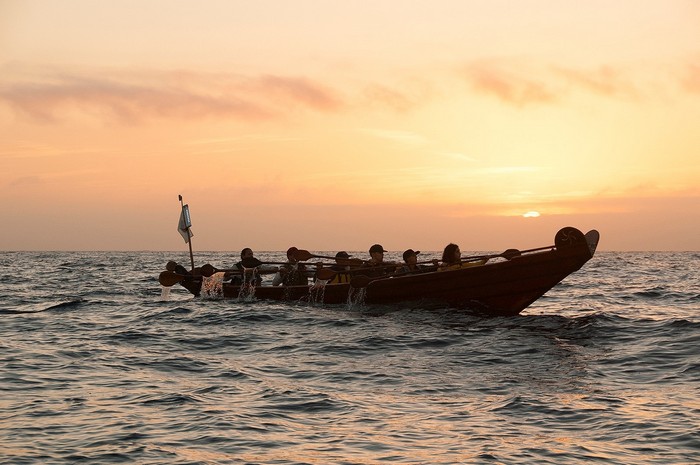by Nella Nelson
Forging through the choppy Pacific waters on a windy day or gliding across to the Channel Islands, tomols were once seen just off our local shores. What is a tomol exactly, and what is its history with the Chumash people?
Hundreds of years ago, the native island Chumash people hunted, fished and traded across the Channel in canoes they built called tomols. The Chumash constructed them from redwood trees that drifted down from the coast, fastening cut planks together with animal sinews and sealed with a tar-like substance called yop. If you’ve ever walked along the shores of Carpinteria and found clumps of tar glued to your feet, that is the naturally occurring asphaltum from oil seeping into the water from below the earth’s surface. Combined with pine pitch, yop was used to make the canoes sealed and seaworthy.
Once the tomol was ready for the voyage, the Chumash paddled them out to obtain marine food sources such as mussels, abalone and shellfish during low tide. Seals and sea lions were hunted on or near shore. The Chumash also utilized their sophisticated capture technology such as hook and line, nets and harpoons in offshore fishing.
Tomols were also used for ceremonial voyages and trade between the mainland and the Channel Islands. Using double-ended paddles, the tomols were able to transport up to eight people at a time or over 2,000 lbs. of fish or cargo. Their lengths ranged from 8-30 ft. Tomols were the only plant-built canoes ever employed (all others were dug out from logs), other than in one other civilization in Southern Chile.
In August of 2023, a community of Chumash members participated in a 24-mile journey across the Santa Barbara Channel to Santa Cruz Island for the twentieth time in modern history. The tomol was appropriately named Muptami or “Deep Memories”. A rotating crew paddled for eight hours. They were then greeted by their fellow Chumash from Malibu to San Luis Obispo upon arrival at Scorpion Ranch or Swaxil. The event coincided with the peak of the Perseid meteor shower upon departing at 3:00 AM. Thousands of years of “deep memories” are being preserved to this day as the tomol’s history lives on.
Sources:
Photos: Channel Islands National Park and painting by Robert Thomas.
https://www.nps.gov/chis/learn/historyculture/tomolcrossing.htm
https://sbmm.org/maritime-museum-exhibits/chumash-tomol-plank-canoes/
https://channelislands.noaa.gov/maritime/chumash1.html
You Tube Video Available: SBMM’s Chumash Tomol: Narrated Tour. May 14, 2020.

